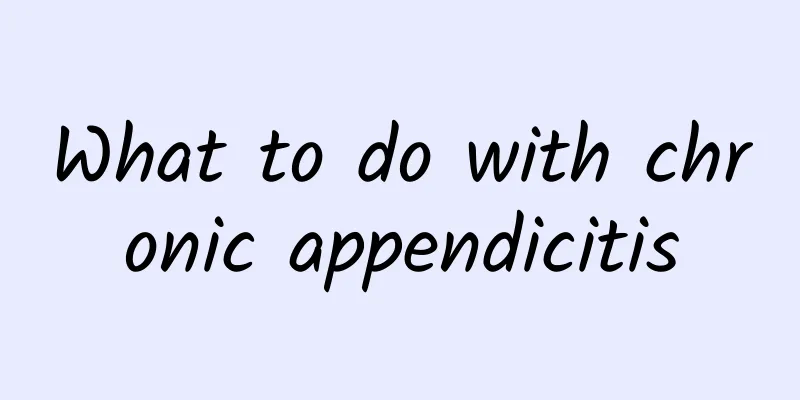What to do with chronic appendicitis

|
The onset of chronic appendicitis is closely related to factors such as environment, diet, living habits, and infection. Its symptoms are similar to many gastrointestinal diseases, with characteristics such as poor appetite, nausea, vomiting, and mild fever. The harm of chronic appendicitis is continuous, which has a great impact on the patient's health and life. Treatment is the most concerning thing. So, what should we do about chronic appendicitis? Let’s take a look below. 1. Non-surgical treatment When acute appendicitis is in the early simple inflammatory stage, once the inflammation is absorbed and subsides, the appendix can return to normal and will not recur. Therefore, the appendix does not need to be removed. Non-surgical treatment can be used to promote the early disappearance of appendicitis inflammation. When the diagnosis of acute appendicitis is clear and there are surgical indications, but the patient's physical condition or objective conditions do not allow it, non-surgical treatment can be adopted first to delay surgery. If acute appendicitis is combined with localized peritonitis and an inflammatory mass is formed, non-surgical treatment should also be used to allow the inflammatory mass to be absorbed before considering elective appendectomy. If the inflammatory mass turns into an abscess, it should be incised and drained first, followed by elective appendectomy. When the diagnosis of acute appendicitis has not been confirmed and needs to be observed, non-surgical treatment can be used while observing the changes in the condition. In addition, non-surgical treatment can also serve as preparation before surgery, so non-surgical treatment is very important. Non-surgical treatments also include: (1) General treatment The main treatments include bed rest, fasting, intravenous infusion of water, electrolytes, and calories, etc. (2) Antibiotic Application The use of antibiotics in non-surgical treatment is very important. The selection and dosage should be determined according to the specific circumstances. Most cases of appendicitis are mixed infections. In the past, penicillin and streptomycin were used together with satisfactory results. Later, it was found that the number of drug-resistant strains increased and the infection rate of anaerobic bacteria increased. Then the "Golden Triple" was used, namely ampicillin (ampicillin), gentamicin and metronidazole. It has a wide antibacterial coverage, is not expensive, and is highly praised. In recent years, new and highly effective antibiotics have emerged, and cephalosporins are constantly being updated. Therefore, cephalosporins or other new β-lactam antibiotics are often used in combination with metronidazole. |
<<: Clinical manifestations of chronic mercury poisoning
>>: What causes chronic dermatitis?
Recommend
The best medicine for treating fractures
Stumbling and falling is a common thing. It is no...
Citrus aurantium's nature, flavor and meridians
Zhishi is quite common in traditional Chinese med...
What causes stomach pain when sleeping on your side?
There are many important organs in our stomach. O...
What to do if you have acne on your face
With the continuous improvement of modernization,...
What are the effects and functions of Wide Tendon Vine?
Wide tendon vine can dispel wind and dampness, re...
How to get better from a cold quickly
Cold is one of the most common diseases in life. ...
What is lacking when you have oral ulcers? Supplement vitamins!
Many people in our daily lives are prone to oral ...
How to relieve pain effectively when your hand is burned
Many people may get burned easily because they do...
How to treat gas pimples
Poison pimples is a folk name. The so-called pois...
Methods of using traditional Chinese medicine to treat obesity in women
There are many women who have an obese physique. ...
What to do if your gums are swollen? An old Chinese doctor will teach you how to treat it
When the weather is very dry, the body's sali...
Can a male's penis be inherited?
Testicular insufficiency is not a hereditary dise...
Snoring while sleeping with mouth breathing
The purpose of sleeping is to have a good rest, a...
Why is my urine always yellow?
If your urine is always yellow, you should pay at...
Why do I feel hungry and bloated?
If you have a bloated stomach, it is probably cau...









